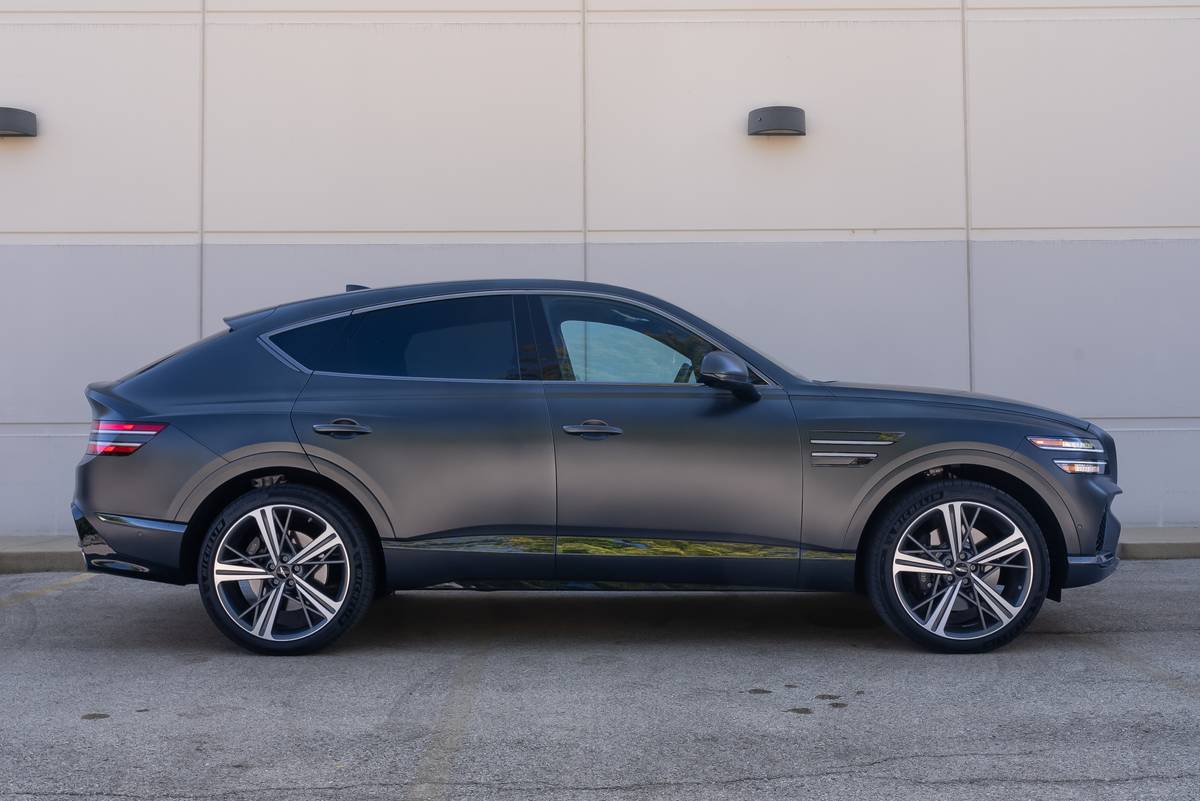washingtonpost.com's view
I told them I was driving a Buick. They laughed.
“Maybe you’ll get a real car next week,” one of them said as I was leaving the newsroom en route to a lobby-bound elevator.
This was at The Washington Post, a place of many Hondas, Toyotas and Volvos and an occasional Mercedes-Benz. There are American cars at The Post. Funnyman columnist Tony Kornheiser even drives a Cadillac. I’ve owned a string of Chevrolets and am planning to buy another, a new Impala, along with a 2001 Chrysler PT Cruiser.
But American metal does not shine brightly among my colleagues, many of whom believe that people with sense would really rather not own a Buick–or anything else from Detroit.
I put aside the put-downs, reached the lobby and walked across the street to the garage housing this week’s test car, the 2000 Buick LeSabre Limited sedan. It was painted one of those metallic earth-tone colors, something its marketers called “light bronzemist.”
The interior was a work of tan leather and vinyl, with leather-faced seats, leather-wrapped steering wheel, and vinyl-and-cloth door panels. There was a strip of polyurethane forestry–faux burled walnut–running along the lower dashboard and extending a bit into the front doors.
The passenger cabin was commodious, though not sumptuous; comfortable and convenient, with typical power-operated items (doors, side-view mirrors, front seats), but not luxurious in the premium sense. The LeSabre’s huge taxicab instrument panel, a mixture of analog and digital gauges, bespoke mainstream America.
I examined closely the fit and finish and found it excellent even though General Motors Corp., the LeSabre’s maker, still uses more pieces than its rivals in assembling components such as door panels.
The engine held no surprises. The new LeSabre retains GM’s aging but admirably functional 3.8-liter V-6, which produces 205 horsepower at 5,200 rpm and 230 pound-feet of torque at 4,000 rpm. Wanna-be speedsters sniff at this power plant. They bemoan its lack of sophistication and ancient push-rod setup. But, fact is, it works as well as, if not better than, many more modern V-6 engines.
Highway cruising proved enjoyable. There was a softness to the new LeSabre’s ride, but the excessive wallow, so characteristic of its predecessors, was absent. Credit here goes to improved body rigidity and better suspension work.
A tighter car body is easier to control. A tighter body atop a front suspension supported by a rubber-isolated cradle, as is the case with the new LeSabre, gives you the feeling of actually being in charge of the car’s destination. That feeling is enhanced by the rear suspension, which is designed to reduce dipping and diving during panic stops.
I parked the car and surveyed its body in sinking sunlight. Its lines were clean, especially along the side panels. The front end, with its trademarkwaterfall grille and circled Buick insignia, had aJaguar-esque muscularity–a styling cue also taken up in the re ar. The car looked nice, certainly as nice as the Toyota Avalon or some other traditionally vanilla rival.
The LeSabre Limited was a real car all right, and it was a good one, too. It might not appeal to buppies and yuppies. But since when were they the only real people in the world?
2000 Buick LeSabre Limited
Complaints: Thick A-pillars enclosing the windshield hamper peripheral visibility. Like other front-wheel-drive cars, this one is affected by occasional torque steer, manifested by a twisting-pulling sensation in the front wheels during acceleration and sharp turns.
Praise: A solid, overall well-done, conservative family car. Built for a pleasant cross-country run.
Head-turning quotient: Turns no heads, and here’s why: Young people tend not to look at it; older people who like it often have stiff necks.
Ride, acceleration and handling: Excellent ride. Decent acceleration, which means the car is highway competitive. Good handling, which means itma neuvers well in urban and highway traffic, especially when driven within the bounds of common sense. Good braking. Brakes include power four-wheel discs with anti-lock backup.
Capacities: Seats five. Can handle six passengers with bench seats. Capacious trunk, 18 cubic feet. Fuel tank holds 17.5 gallons of recommended regular unleaded.
Mileage: About 27 miles per gallon in mostly highway driving. Estimated 457-mile range on usable volume of fuel.
Safety: Side-impact air bags standard.
Price: Base price is $26,695. Dealer invoice on base model is $24,426. Price as tested is $29,420, including $2,110 in options and a $615 destination charge.
Purse-strings note: Excellent value. Compare with Toyota Avalon, Ford Crown Victoria/Mercury Grand Marquis, Chrysler Concorde/Dodge Intrepid.
Latest news

10 Biggest News Stories of the Week: Jeep Wrangler Rides on Audi E-Tron GT, Chrysler Pacifica Hybrid


